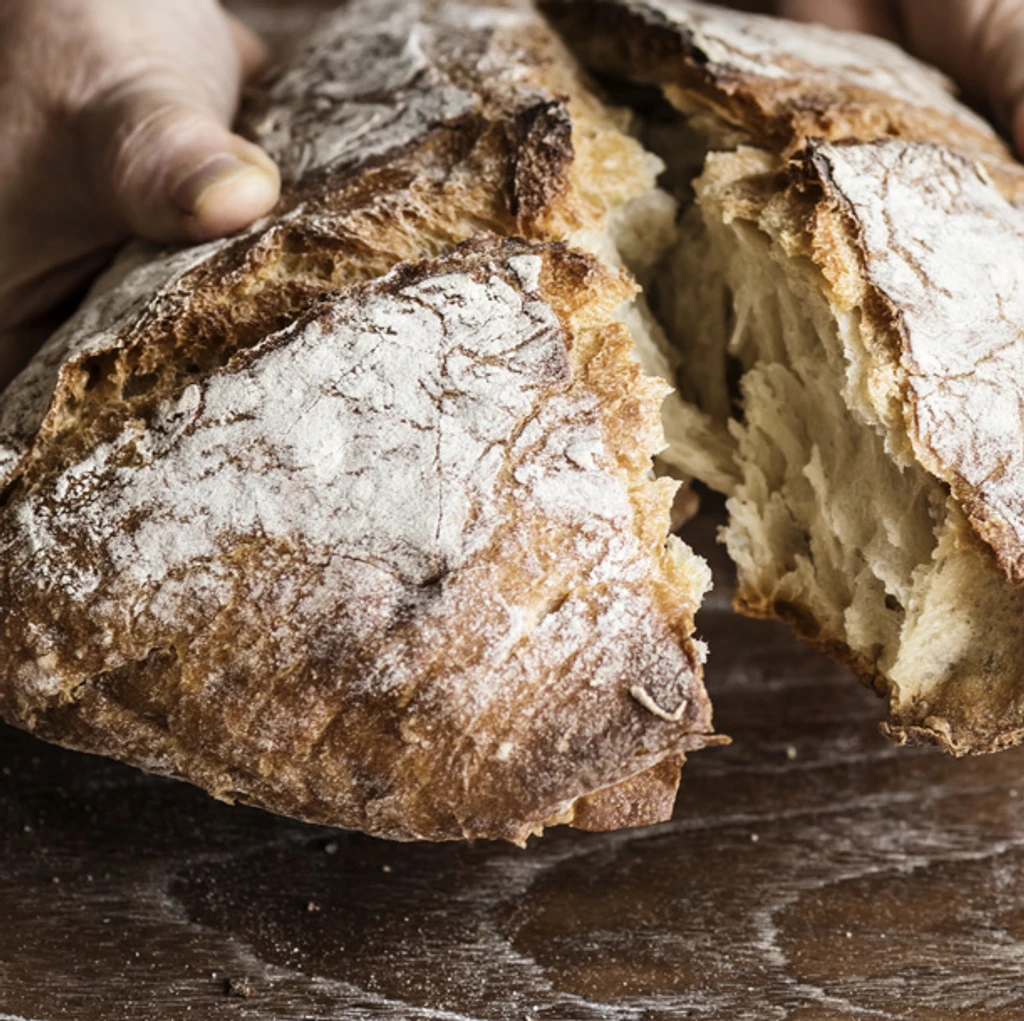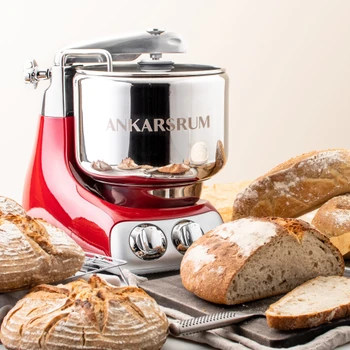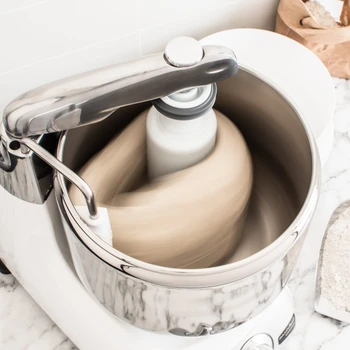Hydration has become a commonly used term in recipes and has been linked to dough. Hydration indicates how much liquid is present in the bread in relation to flour. For example: 80 grams of liquid to 100 grams of flour gives you 80/100 = 80 % hydration.
Baking with a high liquid content in relation to the quantity of flour is more challenging. However, the result is usually an airier, more moist bread. There are a number of factors you need to consider for a successful outcome, including your choice of flour, for example. (Read more about different flour options here.) A coarser flour can, as a rule, handle more liquid better than a white flour. We therefore recommend using a strong flour or similar and not normal wheat flour when making dough with a high liquid content. As regards proving time, a longer proving process and proving in stages are usually required when making dough with a high liquid content.
When you make dough with a high liquid content in your Ankarsrum, remember to leave the dough to knead for longer than you normally would. If you set the timer for 8-10 minutes for a “normal” dough, then a dough with a high liquid content should be kneaded for about 15 minutes. Don’t be afraid to prove the dough even though it feels loose. You can add more flour, if needed, to your kneading surface and your hands when you shape the bread after proving. Achieving a good height can be a challenge, as the dough can spread a little more than normal. Try using a folding technique and a lot of flour on the surface and your hands, and build up the dough to the required height before baking.





